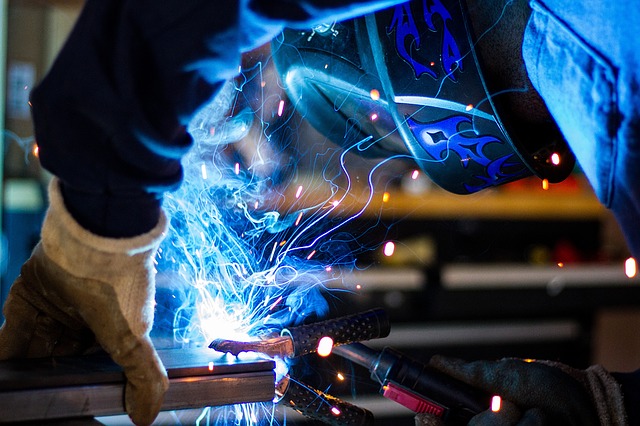Welding
Welding is a technique that can be used to join metallic components through the application of heat. It produces a secure and strong joint by combining two metals into one rather than other processes such as brazing and soldering that bond the pieces together.
Welded joints must be carefully designed with the expected forces, and the type and magnitude of the loads to which it will be subject in mind. The type of joint required – whether butt, lap, T, corner or edge – will determine the type of welding process.
Pressure welding involves applying external pressure to produce joints at temperatures either above or below the melting point. This technique is typically used on highly-ductile metals or those that become more ductile with the application of increasing heat. The two metallic components must be very clean and free of oxides to ensure the strongest possible joint. Some of the most common pressure welding processes include:
- Induction welding: For pipes.
- Inertial welding: For high-strength alloys.
- Cold pressure welding: For creating joints between sheets, wires, and so on.
- Explosive (or percussion) welding: For joints between dissimilar metals.
- Ultrasonic welding: For thin sheets.
- Friction welding: For joints between similar metals.
Fusion welding involves heating the edges of the metal components to above the melting point. No external pressure is used and a filler metal may or may not be used, as may inert gases be used, which can enhance the quality of the weld. Once the fused weld pool has solidified, the welded joint is complete. Suitable metals for fusion welding are those that are, to a certain level, mutually soluble in a solid state.
Welding operatives must be equipped with welding gloves, suitable eye protection, and a fire extinguisher. Sparks can be produced when welding, and so the area around the activity must be kept clear of flammable items.
[edit] Related articles on Designing Buildings Wiki
- Adhesive.
- Bolt.
- Cable tie.
- Clamp
- Cramp.
- Failure of metals.
- Industrial fasteners market.
- Inspections focus on occupational lung disease.
- Nut.
- Major cast metal components.
- Metal fabrication.
- Rebar.
- Safe2Torch.
- Screw.
- Soldering.
- Structural steelwork.
- The importance of welding assurance.
- Types of fixings.
- Washer.
- Welding consumables.
- Welding equipment market.
- Welding products market.
Featured articles and news
Designing Buildings reaches 20,000 articles
We take a look back at some of the stranger contributions.
Lessons learned from other industries.
The Buildings of the Malting Industry. Book review.
Conserving places with climate resilience in mind.
Combating burnout.
The 5 elements of seiri, seiton, seiso, seiketsu and shitsuke.
Shading for housing, a design guide
A look back at embedding a new culture of shading.
The Architectural Technology Awards
The AT Awards 2025 are open for entries!
ECA Blueprint for Electrification
The 'mosaic of interconnected challenges' and how to deliver the UK’s Transition to Clean Power.
Grenfell Tower Principal Contractor Award notice
Tower repair and maintenance contractor announced as demolition contractor.
Passivhaus social homes benefit from heat pump service
Sixteen new homes designed and built to achieve Passivhaus constructed in Dumfries & Galloway.
CABE Publishes Results of 2025 Building Control Survey
Concern over lack of understanding of how roles have changed since the introduction of the BSA 2022.
British Architectural Sculpture 1851-1951
A rich heritage of decorative and figurative sculpture. Book review.
A programme to tackle the lack of diversity.





















